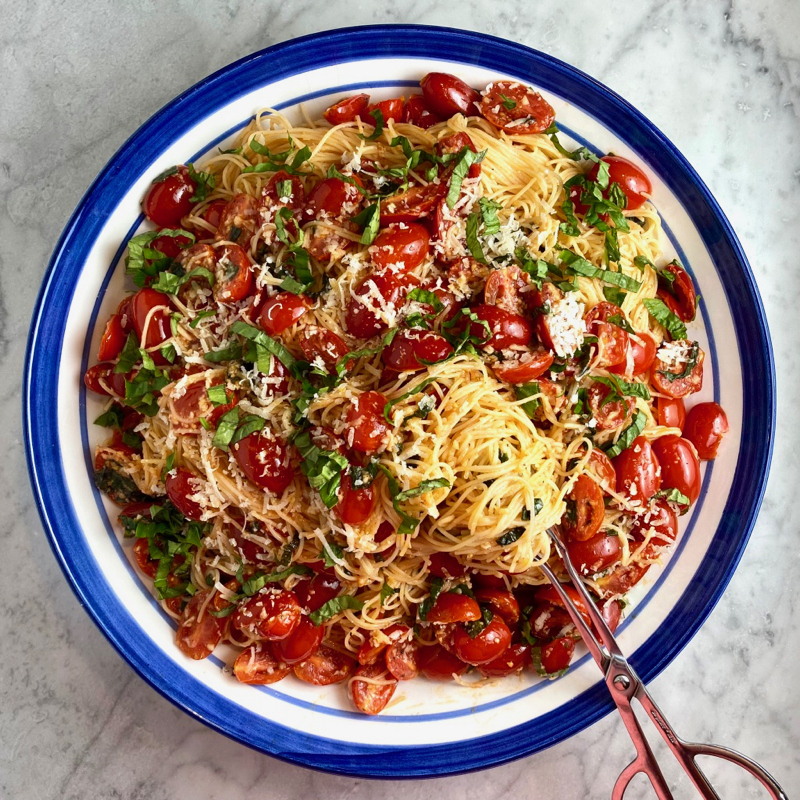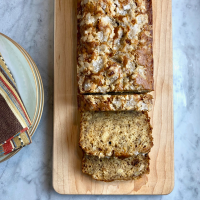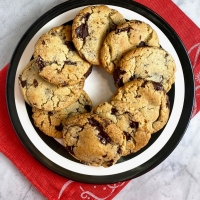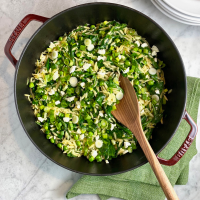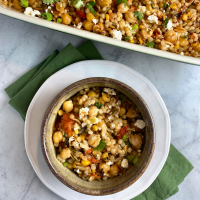
This was my first white (tomato-free) Bolognese. I loved that this version incorporated mushrooms. I also substituted ground turkey for the ground pork to lighten it a little bit. Maybe I’ll try it with ground pork next time. 😉
This recipe was adapted from Cooking in Real Life: Delicious and Doable Recipes for Everyday via Food and Wine, contributed by Lidey Heuck. I modified the method and proportions. I used Cascatelli pasta but may try orecchiette next time. The fennel seeds were absolutely essential. Great.
Yield: Serves 6
- 4 oz diced pancetta
- 8 to 10 oz cremini mushrooms, cut into 1/2-inch pieces
- 4 small carrots, peeled and cut into 1/2-inch pieces (1 1/2 cups)
- 1/2 large or 1 medium onion, chopped (1 1/2 cups)
- 3 celery stalks, trimmed and chopped (1 cup)
- 2 T unsalted butter
- 1 tsp fennel seeds
- 1 tsp dried oregano
- 1 tsp Kosher salt, plus more to taste
- 1/4 tsp crushed red pepper
- 8 large garlic cloves, minced
- 1 pound ground turkey or ground pork
- 1/2 tsp black pepper
- 1 cup dry white wine
- 1 cup chicken stock, chicken broth, or water
- 1/3 cup heavy cream
- 1 pound uncooked orecchiette pasta (I used Cascatelli)
- 1/4 cup chopped fresh flat-leaf parsley
- grated Parmigiano-Reggiano cheese, for serving
- Heat a large Dutch oven over medium-low to medium heat. (I used an enameled cast iron Dutch oven.)
- Add pancetta, and cook, stirring often, until browned, about 4 to 6 minutes.
- Add mushrooms, and cook, stirring occasionally, until liquid released by mushrooms has mostly evaporated, about 4 to 5 minutes.
- Increase heat to medium to medium-high.
- Add carrots, onion, celery, butter, fennel seeds, oregano, salt, and crushed red pepper. Cook, stirring occasionally, until vegetables are tender, 10 to 12 minutes.
- Add garlic, and cook, stirring constantly, until fragrant, about 30 seconds.
- Add ground meat and black pepper. Cook, stirring constantly with a wooden spoon to break meat until browned, about 4 minutes.
- Add wine and bring to a simmer.
- Add broth and cream and return to a simmer.
- Reduce heat to low; simmer, uncovered, stirring occasionally, until broth mixture is slightly thickened and reduced to about 5 cups, about 15 minutes.
- While Bolognese cooks, bring a large pot of salted water to a boil over high heat. Add pasta, and cook according to package directions for al dente, stirring occasionally. Drain, reserving 1 cup of pasta water.
- Add cooked pasta and 1/2 cup reserved pasta cooking water to Bolognese. Cook over low, stirring constantly, until a creamy sauce forms and coats pasta, about 3 minutes. Add remaining 1/2 cup of pasta water as needed to loosen the sauce.
- Season with salt to taste.
- Place in a serving bowl and garnish with parsley and cheese.


